Ski: 2021-2022 Majesty Superwolf, 178 cm
Available Lengths: 148, 154, 160, 166, 172, 178, 184 cm
Blister’s Measured Tip-to-Tail Length: 176.3 cm
Stated Weight per Ski: 1450 grams
Blister’s Measured Weight per Ski: 1477 & 1481 grams
Stated Dimensions: 131-91-111 mm
Blister’s Measured Dimensions: 129.9-90.6-110.1 mm
Stated Sidecut Radius (178 cm): 18 meters
Measured Tip & Tail Splay (ski decambered): 62 mm / 14 mm
Measured Traditional Camber Underfoot: 4 mm
Core: paulownia + fiberglass laminate
Base: sintered IS7200 “fast base”
Factory Recommended Mount Point: -9.85 cm from center; 78.3 cm from tail
Boots / Bindings: Atomic Hawx Prime XTD 130 / Majesty R12
Test Locations: Crested Butte & Mt Sneffels, Colorado
Days Skied: 11
[Note: our review was conducted on the 20/21 Superwolf, which was not changed for 21/22.]

Intro
Last week we posted our First Look & Flash Review of the new Majesty Havoc, a 110mm-wide, lightweight freeride ski. As we noted in that post, we’re also reviewing Majesty’s 118mm-wide, twin-tipped Vanguard and the ski we’re discussing here, the 91mm-wide Superwolf.
The Superwolf is new for the 20/21 season and essentially replaces the Majesty Werewolf, serving as the middle ski in Majesty’s touring collection and slotting between the ~85mm-wide Superscout and ~103mm-wide Supernova.
I’ve now been able to spend a bit of time on the Superwolf in Crested Butte, mounted by The Alpineer with the new Majesty / ATK R12 bindings, and Blister Members can check out my Flash Review for my initial on-snow impressions. For now, let’s take a closer look at the design of the Superwolf and how it compares to the competition. We’ll also be posting a video First Look soon, so subscribe to our YouTube channel to stay up to date on that and our other videos.
What Majesty says about the Superwolf
“Superwolf is the ultimate, multi-purpose ski to handle diverse conditions, fresh tracks and steep, technical lines. We have equipped our new re-engineered skis with an early rise tail, rocker tip, semi-cap construction, paulownia wood core, triax and biax fiberglass. It is a high performance ski mountaineering skis that’s usability has been increased with the longer contact edge and more control. Construction and radius makes Superwolf stable at high speed and maneuverable in tight places.”
While many people would think of a ~91mm-wide ski as a pretty narrow, firm-snow-oriented option, Majesty is highlighting the versatility of the Superwolf in their description. And as we’ll get into below, I think they have some reason to do so just looking at the design of the ski.
It’s also worth noting that Majesty makes several of their touring skis in both “standard” and carbon versions. The standard Superwolf we’re reviewing uses a pretty simple construction with a paulownia wood core and fiberglass laminate, and then the Superwolf Carbon ditches the fiberglass in exchange for a lighter carbon laminate and consequently lower weight (stated weight of the 178 cm Superwolf Carbon is 1310 grams). Despite these skis being designed with low weight as a priority, they still feature pretty standard edges and sintered bases, and a semi-cap construction with most of the ski featuring a pretty tall sidewall.
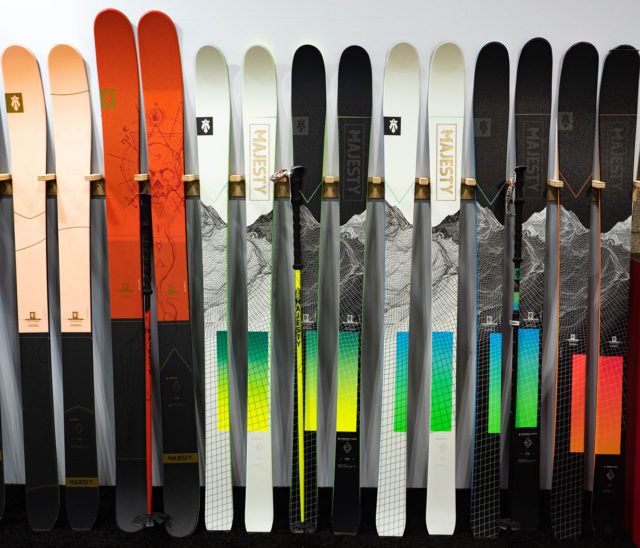
Oh, and I also want to commend Majesty for the graphics of their touring lineup. This is obviously totally subjective, but where most touring skis tend to stick to more minimal, arguably bland graphics, I love the retro ‘80s look of their 20/21 touring skis.
Shape / Rocker Profile
As soon as I saw the Superwolf, I immediately thought of the Salomon MTN Explore 95, which is one of our all-time favorite skis in this class. Like the MTN Explore 95, the Superwolf has a directional shape with a tip that’s pretty tapered and a much less tapered tail. This is in contrast to more traditionally shaped skis like the Line Vision 98 and Blizzard Zero G 95, and it’s a big reason why I suspect that the Superwolf might be a bit more versatile / easier than some of those skis in deeper and more variable conditions, where minimally tapered — and especially really light & stiff — skis can feel hooky and difficult.
Compared to the Majesty Werewolf, the Superwolf’s shape dials back the dramatic tip taper and the shape is overall a bit less radical than the very tapered (and pretty straight) Werewolf.
The Superwolf’s rocker profile looks like it matches its sidecut, with a fairly deep tip rocker line (for a ~91mm-wide ski) and a much shallower tail rocker line with a fairly flat tail. The Superwolf’s rocker profile is also quite similar to the MTN Explore 95’s, though the MTN Explore 95’s tip rocker line is a bit deeper while its tail is a bit flatter.
Flex Pattern
Here’s how we’d characterize the flex pattern of the Superwolf:
Tips: 6.5
Shovels: 6.5-7.5
In Front of Toe Piece: 8-9.5
Underfoot: 10
Behind the Heel Piece: 9.5-9
Tails: 8.5-8
For reference, Majesty says the Superwolf has a directional flex pattern and lists the “flex ratio” as 7.
Their note about the Superwolf having a directional flex pattern is definitely accurate — its front half is notably softer than its back half. Overall, the Superwolf’s flex pattern is pretty dang similar to the MTN Explore 95 and Dynastar Mythic 97, and stiffer overall than the Line Vision 98. The Superwolf has tips and shovels that are fairly easy to bend, there’s a slow-and-smooth ramp up as you move from the shovels to the middle, a strong section underfoot, and a slight decrease in stiffness as you move to the tail.
Sidecut Radius
One of the defining aspects of the old Majesty Werewolf was its long sidecut radius (26.2 meters for the 184 cm length). While our reviewer Cy Whitling found that to be nice when making hop turns down steep couloirs as it kept the ski from feeling hooky, it also made the ski fairly difficult when he just wanted to make shorter carved turns on mellower slopes.
The Superwolf sticks with a less radical sidecut radius, with the 178 cm length having a stated sidecut radius of 18 meters. I’m curious to see if this moderate radius will help make the Superwolf easier and more fun on moderate slopes, without making it hooky in steep terrain.
Mount Point
Like many other skis in this class, the Superwolf has a pretty traditional mount point of around -9.8 cm from true center.
Weight
The Superwolf is definitely a lightweight ski at an average weight of 1479 grams per ski for the 178 cm length, though there are also plenty of lighter options in the ~90mm-wide, touring category (including the carbon version of the Superwolf).
But, as frequent readers of Blister know, we tend to be content skiing slightly heavier setups in exchange for better downhill performance, and we know many other skiers feel the same. So, personally, I’m pretty excited about the weight of the Superwolf. It’s similarly light compared to skis like the K2 Wayback 96, MTN Explore 95, & Line Vision 98, but heavier than some of the superlight options like the Fischer TransAlp 90 Carbon.
You could always go lighter by picking the Superwolf Carbon, but I’m excited about the potential stability and suspension of the Superwolf vs. some of the lighter options in this class.
For reference, here are a number of our measured weights (per ski in grams) for some notable skis. Keep in mind the length differences to try to keep things apples-to-apples.
1250 & 1256 Fischer TransAlp 90 Carbon, 176 cm (18/19–19/20)
1353 & 1358 Majesty Werewolf Carbon, 184 cm (17/18–19/20)
1353 & 1376 Blizzard Zero G 95, 185 cm (16/17–18/19)
1390 & 1439 Salomon MTN Explore 88, 184 cm (17/18–20/21)
1446 & 1447 Line Vision 98, 179 cm (19/20–20/21)
1469 & 1477 K2 Wayback 96, 177 cm (18/19–20/21)
1477 & 1481 Majesty Superwolf, 178 cm (20/21)
1489 & 1545 G3 FINDr 102, 179 cm (19/20–20/21)
1512 & 1523 Dynastar Mythic 97, 184 cm (17/18–19/20)
1543 & 1565 Salomon MTN Explore 95, 184 cm (16/17–19/20)
1629 & 1684 Elan Ripstick 96, 181 cm (17/18–19/20)
1632 & 1637 Armada Tracer 98, 180 cm (19/20–20/21)
1633 & 1638 Faction Prime 2.0, 184 cm (17/18–18/19)
1661 & 1664 Black Crows Camox Freebird, 178 cm (17/18–18/19)
Some Questions / Things We’re Curious About
(1) The Superwolf is fairly narrow at 91 mm underfoot, but it has a pretty modern, tapered shape with a notable amount of tip rocker, so just how versatile will it feel across a wide range of backcountry conditions?
(2) The Superwolf isn’t the absolute lightest ski in its class, but it’s still pretty light. So how damp will it feel compared to both lighter & heavier options in this class?
(3) The Superwolf’s design shares a lot in common with one of our favorite skis, the Salomon MTN Explore 95, so just how similar will they feel on snow?
Bottom Line (For Now)
The Majesty Superwolf looks like it could be a good narrower touring ski for those who appreciate efficiency on the uphill but who don’t need the absolute lightest setup out there. That basically describes me, so I’m very excited to keep putting time on this ski (and the new Majesty / ATK R12 binding). Blister Members can check out my Flash Review linked below, then stay tuned for our full review.
Flash Review
Blister Members can now check out our Flash Review of the Superwolf for our initial impressions. Become a Blister member now to check out this and all of our Flash Reviews, plus get exclusive deals and discounts on skis, and personalized gear recommendations from us.
FULL REVIEW
Luke Koppa (5’8”, 155 lbs): During this spring / summer in Crested Butte, the new Majesty Superwolf very quickly became my go-to ski. Why? Because I think it offers a combination of predictability, versatility, stability, and low weight that’s fairly rare for skis in this class.
(Jonathan Ellsworth agrees with me on this, and he’ll be offering his thoughts below specifically regarding length.)
Let’s dive in:
Soft, Spring Corn
Nice, sun-softened corn is the primary goal for most of my spring touring days, and the Superwolf definitely excels in these conditions.
In forgiving conditions like corn, touring skis’ low weights are often much less noticeable, and I can get away with skiing them much harder than I’d be comfortable doing on firmer and / or rougher snow. That’s certainly true of the Superwolf — I’ve been having an absolute blast carving fast, high-edge-angle turns on this ski when I nail the corn cycle and find myself on top of a wide-open bowl of soft, supportive snow. The 178 cm length’s 18-meter radius felt very versatile — I could bend it into very tight turns, I could open it up into some very large ones, and it never felt particularly hooky or grabby to me. And when I felt comfortable pushing it, the Superwolf produced a nice amount of rebound and pop coming out of each turn.
For a spring touring ski — one that I’m inevitably going to use in a very wide range of conditions — predictability is key. Throughout all my time on it, the Superwolf has been just that. There were a few days where we found ourselves skiing quite fast on corn, only to abruptly run into a shaded spot that hadn’t yet warmed, and while it definitely encouraged me to slow down, the Superwolf didn’t randomly start getting knocked around like crazy to the point that I felt out of control. That’s something that I can’t say for all of the lightweight, ~90-95mm-wide skis I’ve used.
Firm, Rough Snow
On that note, while I would love to be able to only ski perfect corn, that’s not usually the case. My spring and summer lines often involve some awful snow at the beginning or end, and I unsurprisingly skied a good bit of that on the Superwolf.
On firm suncups, previous skiers’ tracks that hadn’t yet thawed, or other firm, bumpy conditions, the 178 cm Superwolf does quite well for what it is (a ~1480 g, 91mm-wide ski). Like any ski this light, it definitely does not encourage fast skiing in these conditions. I wouldn’t expect it to, but it does accomplish what I want this sort of ski to do in these conditions: make them relatively easy to slowly ski while I try to find better snow.
Unlike some skis in this class that are even lighter, stiffer, and / or have less tapered tips, the Superwolf is pretty easy to pivot and shed speed — even when I’m not skiing it with perfect technique. A ski with much more rocker and a softer flex pattern (e.g., Line Vision 98) is still going to be more forgiving and easier to maneuver than the Superwolf, but I very rarely found myself having a hard time slipping and sliding my way through awful conditions on the Superwolf. As long as I maintained just a bit of pressure on its shovels, its tail was easy to release and I could confidently slarve around toward (hopefully) better snow.
As for suspension / damping, I’d say the Superwolf is quite good. I think that’s the main upside of going with the Superwolf over some of the lighter options in this class. While it feels very far from “plush” or “smooth” on really awful, firm snow (no ski this light does), it did a good enough job of absorbing the vibrations of skiing this sort of snow that I’d be happy bringing it on days where I inevitably run into some nasty snow on the way to / from good corn. And I think it’s the Superwolf’s combination of decent suspension + its maneuverable, predictable, fairly forgiving ride that makes me like it so much.
Firm, Smooth Snow + Hop Turns
In addition to ripping corn, my spring / summer touring days also often involve trying to ski some steep couloirs, most of which are pretty firm and smooth when I ski them. So in addition to being able to make high-speed carves in good snow and handle rougher snow in open terrain, I also need a spring ski to offer good edge hold on smoother, firm snow and be predictable while making hop turns in steep, tight chutes.
Overall, I have few complaints about the Superwolf in these scenarios. I “skied” it on the firmest, most icy conditions I’ve ever felt with skis on my feet, and it held an edge as well as I’d expect. I put “skied” in quotes since we were just side-stepping the borderline water-ice and protecting each step with our axes, but the bottom line is that I quickly found myself trusting the Superwolf to not lose an edge and send me tumbling down the couloir.
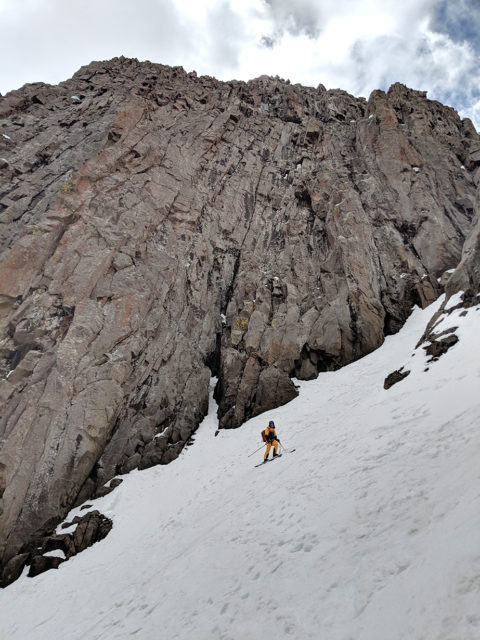
On firm, smooth snow that we could actually slide down, rather than sidestep and back up with protection, the Superwolf again felt solid in terms of edge hold. It was easy to hop turn (most skis this light are), but it also didn’t hook up upon landing a hop turn and then pull me across the fall line. This was something I was a bit worried about, given the 178 cm Superwolf’s somewhat short, 18-meter sidecut radius, but I was happy to experience basically no “hookiness” on the Superwolf. It also didn’t feel prone to launching forward if I landed a hop turn a bit backseat, while also never folding up on me in the fore or aft direction (again, I’m 5’8”, 155 lbs).
Slush
All the winter storms had passed by the time I got on the Superwolf, so I can’t specifically comment on how it handles deep, fresh snow. But I can talk about how it does in deep, loose, slush.
For a 91mm-wide ski, particularly a directional one with a pretty flat tail, the Superwolf does quite well in slush. As in soft corn, it’s not difficult to get its tail to release and slide if you put a bit of pressure on its tips, and those fairly tapered tips seemed to be a big part of what kept it from feeling hooky and grabby in softer, slushier snow.
I’ll always prefer a fairly wide, tapered, and rockered ski for super slushy snow, but for how well it handles the opposite end of the conditions spectrum, I think the Superwolf performs admirably in weird, punchy, slushy snow.
Uphill Performance
Not much to say here, other than that skinning on the Superwolf is pretty dang nice in most conditions.
For reference, I’ve been using it with the Pomoca Race Pro 2.0 skins, Majesty / ATK R12 bindings, and Atomic Hawx Prime XTD 130 boots. The Race Pro 2.0 + Superwolf combo has been great on everything except for side-hilling icy, rough snow (the scenario where ski crampons would make a lot of sense). With a ski this narrow and conditions that firm, I would’ve preferred a grippier skin than the Race Pro 2.0 or just the option of ski crampons, but I liked this skinning combo everywhere else.
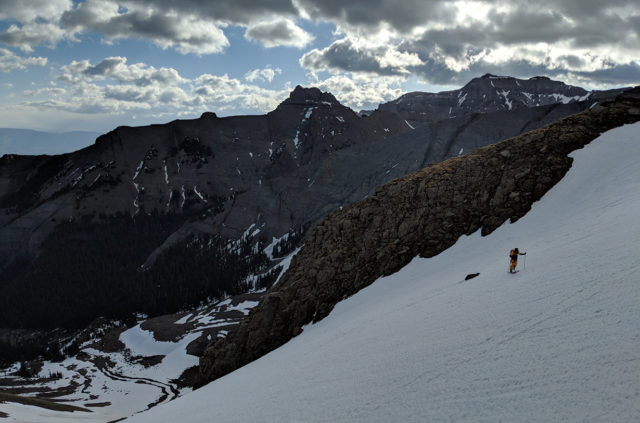
The Superwolf’s subtle notch in its tail matched well with Pomoca’s standard tail clips, and the ski’s tail is flat enough that it’s easy to jam into the snow during transitions.
The R12 binding seems like a great pairing with the Superwolf. You could get away with a lighter binding for longer days and / or if you don’t typically ski very fast on a ski like this (e.g., hop turns), but I loved the power transfer of the R12 when I found some rip-able, soft snow, and it’s still pretty dang light. If anything, there were a few very long days where I would’ve appreciated the lower weight and slightly better range of motion of the Tecnica Zero G Tour Pro vs. the Hawx Prime XTD 130, but that choice mostly just came down to the fact that the Prime XTD fits my foot better.
All in all, I have zero complaints about how the Superwolf goes uphill.
Length
Luke Koppa: I’m 5’8”, 155 lbs and have been very happy using the 178 cm Superwolf. While I typically prefer skis in the 180–190 cm range for skiing fast in the resort, I’ll often go a bit shorter on my spring touring skis to save some weight and since I’m just not skiing that fast on these skis.
If you want better high-speed performance, or more importantly, if you’re ~180+ lbs and ski with an aggressive, forward stance, it’d probably make sense to go up to the 184 cm version. But I guess my main point is that the Superwolf didn’t make me feel prone to size up or down from my typical approach to ski sizes.
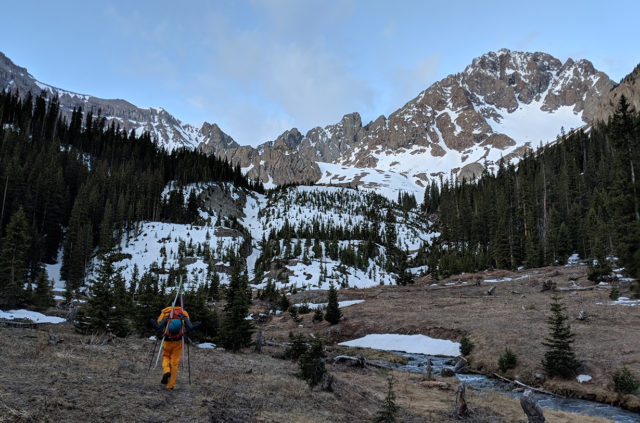
Jonathan Ellsworth (5’10”, ~175 lbs): I wanted to chime in here, just to provide another data point. The first thing to say is that I also have gotten along really well — perhaps one might say shockingly well (given that I am not known for my love of all things lightweight) with this ski. Which is to say, this particular 178 cm ski. Most of my ski touring happens on skis in the 184 cm – 188 cm range, but in nice spring conditions to firmer, frozen conditions, the 178 cm length has not left me dying to jump up to a longer length. And in fact, since a ski like this would get used by me primarily for early-season or late-season (non-deep) ski tours, I’d probably just stick with the 178 cm length. I imagine I’d get along just fine with the next size up, but I’m content.
Who’s It For?
Backcountry skiers looking for a versatile, predictable touring ski that excels in spring conditions.
If you’re looking for a ski that you’ll use pretty equally in mid-winter, powder-esque conditions and shallower / firmer, spring-like conditions, you’d probably be better off on a slightly wider ski. But for spring corn, hop-turning down steep, tight lines, and skiing a bit of softer, deeper snow like slush and the occasional powder day, the Superwolf offers a lot to like.
If you tend to do really long days and therefore place a higher priority on low weight vs. downhill performance, you may prefer an even lighter ski, such as the carbon version of the Superwolf. But, having done a few 13-mile, 5k vert days with the Superwolf, I always came away thinking I’d much rather shed those potential few hundred grams elsewhere in my kit, rather than in my skis. Because the Superwolf offers a noticeable bump-up in terms of suspension, stability, and general downhill performance compared to many of its notably lighter counterparts.
Finally, if you know you’re very frequently prone to skiing backseat in the backcountry, it might be worth checking out some softer, more forgiving skis like the Line Vision 98. But as long as you make an effort to maintain at least a somewhat forward stance, the Superwolf is a pretty forgiving, very predictable ski.
Bottom Line
With the Superwolf, Majesty has done a great job of making a touring ski that’s light enough for long days while still being predictable, intuitive, versatile, and pretty stable (for its weight) in a fairly wide range of conditions. From good corn to firm, steep lines, the Superwolf has proven to be a reliable backcountry option, and Jonathan Ellsworth and I have been quite impressed.
Deep Dive Comparisons
Become a Blister Member or Deep Dive subscriber to check out our Deep Dive comparisons of the Superwolf to see how it compares to the Salomon MTN Explore 95, Majesty Werewolf Carbon, Fischer TransAlp 90, Dynastar Mythic 97, K2 Wayback 96, and Armada Tracer 98.

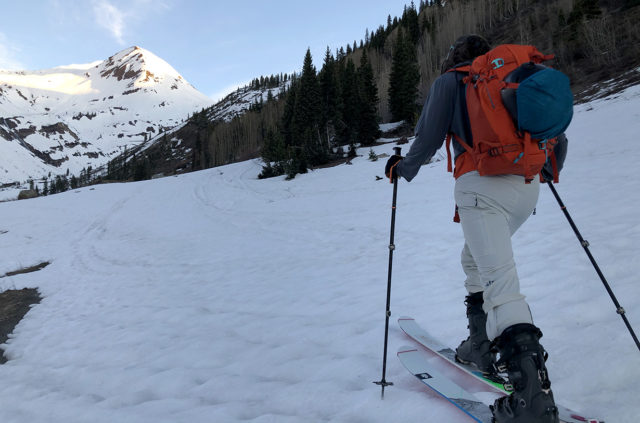
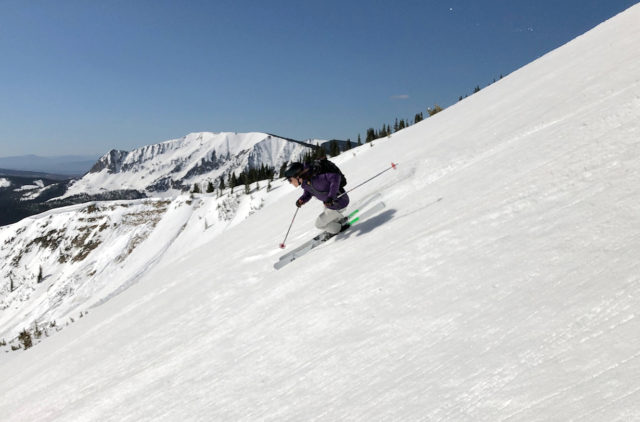
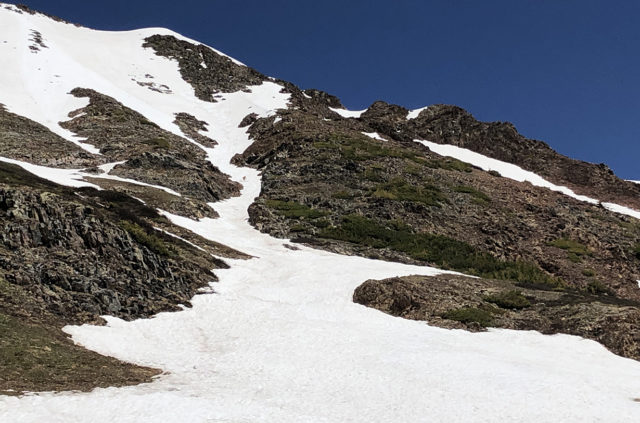
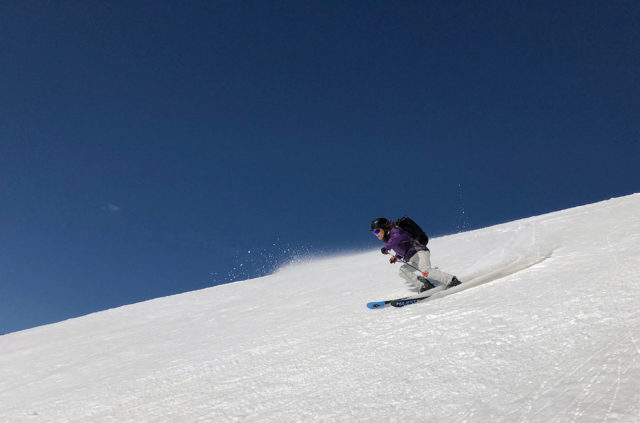
Why not reviewing the Supernova SL! It’s the most aclaimed ski in Majesty’s colection last years?
Did y’all try this ski at all with a more forward mount point? I like skiing steep and narrow stuff in summer but ride with a pretty centered stance most of the time (resort skis in the -2 to -3 cm range)
Thanks!
Thanks for reviewing a spring ski! It feels like < 100mm skis don't get much attention these days.
I would kill for a review of the Voile HyperVector BC or UltraVector BC with the "traction pattern base". This might be the most interesting thing in the world of touring skis for long approaches / big days. Any chance that's coming down the pipe?
They uphill on low angle like a freaking xc ski, it really works! And they are fine downhill in good snow conditions but BC scales aside they are kind of scary chattery in rough or really icy snow downhill. Can’t have it all.
The real drag, literally, is that on very low angle descents or even a resort cat track the scales really slow you down noticeably. This could make a huge difference on a long slow slight downhill to the car where others are just smoothly floating along and you are stalling out.
Hi Luke thanks for the informative review on this ski. I am looking for a new 90 something touring ski for our next southern hemisphere winter and this ski is on my list along with Camox Freebird and Kastle TX 93. Season just gone in spring I skiied Scott Superguide 95 178 with ATK CRaiders and while they are light and capable they are also very stiff even for my 82 kg, great in good snow but inclined to skid and chatter when it gets too hard. I would like something that will flex and carve a little easier. My research suggests that the Camox skis short and would be better in the 184 I really want this ski to be under 180. The TX 93 has way less tip and tail rocker, reviews are sketchy as yet, it seems that the tail can be a little grabby, it has a long effective edge and could be best skiied short in the 170 but that has a 15 m radius which might drive me mad, and there are some reports that it falls apart and speed and in icy conditions. Do you know anything about the TX 93? Otherwise it reads like the Superwolf might be the answer for me?
Cheers Stan in NZ
Hey Clive, I am currently looking to change my TX98 (21m Radius !) to either the Tx93, Superwolf or MTN Explore so I’m curious what you finally chose and why. Thanks
Does anyone (including members) have any idea of how these compare against the Black Crows Orb Freebird for spring ski mo and technical steeps? I like the sounds of the Majestys but I can find the orbs at half the price…
This may be too late but compared to their description of the superwolf the Orb freebird is more forgiving. Its a popular guide ski in Europe and seems to be increasing in popularity in Colorado. I skied maybe a dozen 14ers with it and it was a blast in corn and manageable on the hard stuff and up to boot high pow it was fine as well.
Just finished my first day with the superwolf (carbon, 178) and figured I would share a little since it’s somewhat hard to find information on this ski. I’m mostly in the PNW cascades. For reference, skis I’ve been using this season that I get along with very well: Volkl mantra 102 (delam the rear side frame and now just epox it back, otherwise a good ski that grips super well), Nordica enforcer 99, Nordica enforcer 110, RMU apostle 3.0 (which sometimes feels too loose to me unless it’s consistently soft), RMU Northshore 114 (which is sick), QST echo 106 (which I had been using as my lightweight/volcano touring ski until the superwolf and feels a little more loose in the shovel than the apostle but I found a balance point that was working well). So superwolf is pretty dope. I really like it once I get up to cruising speed, but also for kick turns it worked well. First run was in trap crust and I assumed I needed to drive the front more than necessary and the ski bit across the fall line. After that I took a more relaxed posture and it treated me well. Later in the day I felt the very very first part of the turn initiation was a tiny bit fuzzy but I also was in boots with a little more upright cuff angle, and I think if I had been in my atomics I would have been able to shred without any transition weirdness. I also let it open up on more forgiving backcountry conditions and later on a groomer and learned it seems to prefer speed but not demand it. It’s very smooth for it’s weight. In a weird way it didn’t feel super different from the Nordica enforcer 99 once I had enough speed and as long as the snow was fairly consistent/smooth. I need more time on steeps but the camber and effective edge are very confidence inspiring. The QST echo feels much more loose in the shovel compared to the superwolf, also a little less stable at speed and more forgiving of backseat, but def way better in deeper and less consistent snow. For 1300g the 178 superwolf carbon was pretty dang good for spring conditions in PNW, prob my new go-to volcano ski. Mounted with ATK raider carbon 12 ap which can’t recommend more btw (don’t get the regular ATK raider with the push button brake system, froze on me multiple times and thought I lost my ski down the Wilson glacier one time b/c no brake when got to camp and ski ran away)
Comparison to the Armada 96 locator 178cm would be very much appreciated. They seem to have a very similar shape and profile.